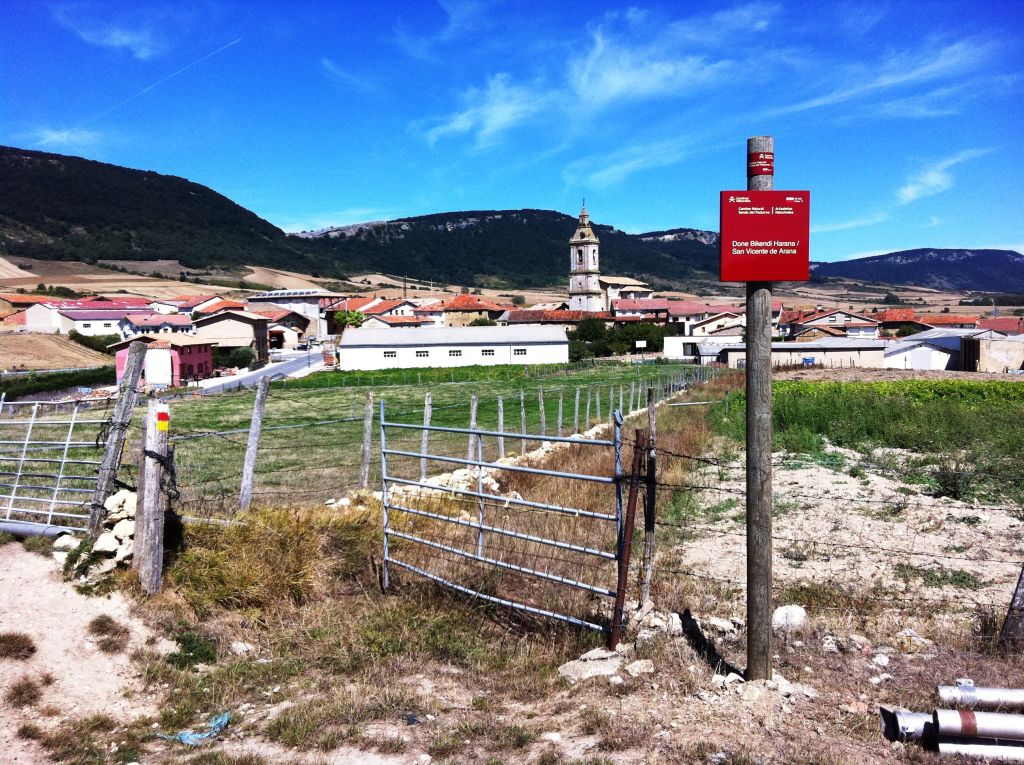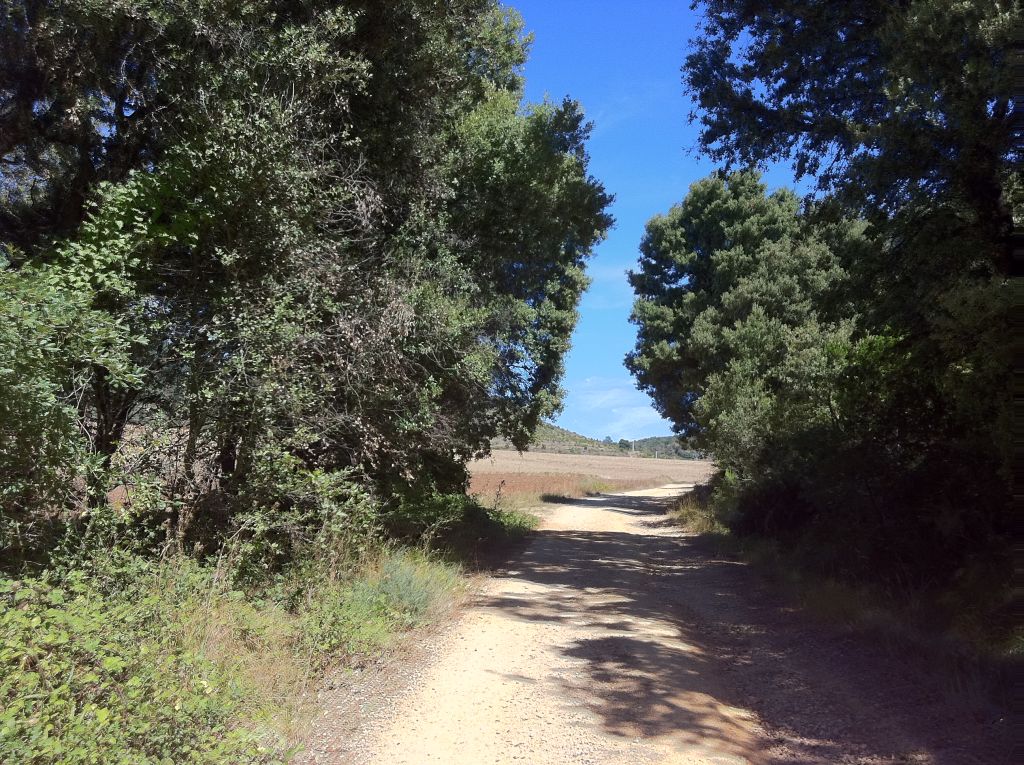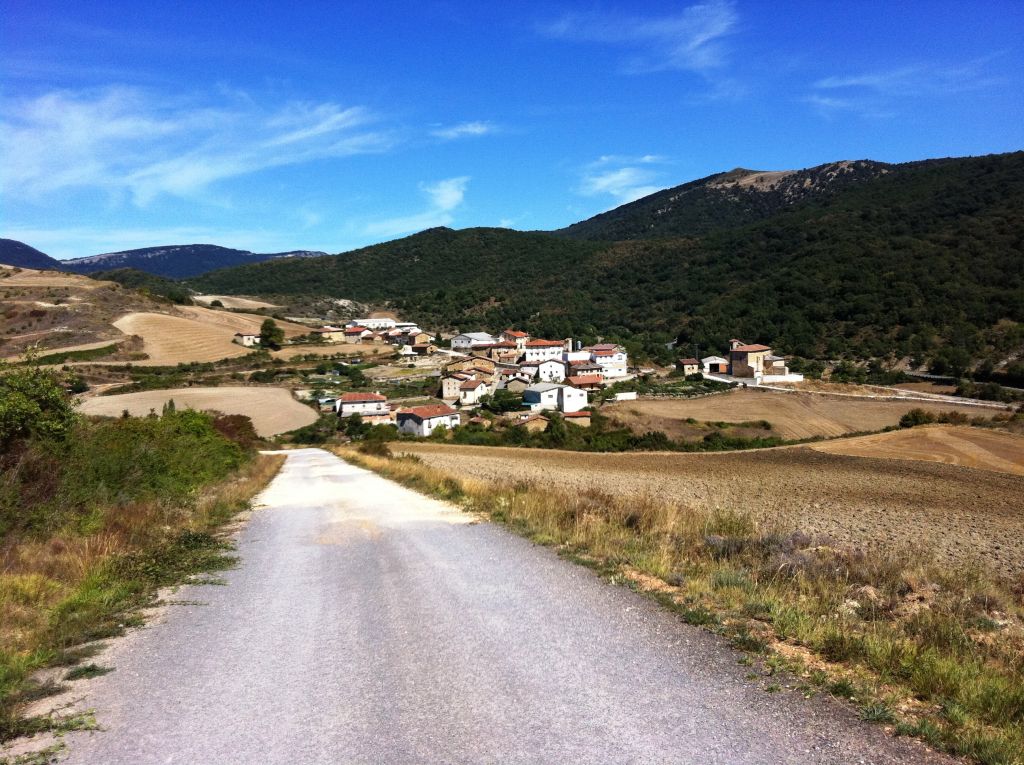- Home
- Rural Development
- Nature Trails
- Nature Trails
- Northeast Sector
Stage 12: Antoñana - San Vicente de Arana
Description

The Valley of Arana
This short stage allows trekkers to regain their strength for successive routes and calmly contemplate the mosaics of colours and textures that make up forests and crops but they should not forget to look upwards in case the silhouette of a Bonelli’s eagle or a bearded vulture should appear.
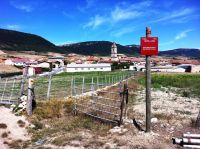
The stage begins in Antoñana, in Arrabal Street, which borders the town on its eastern side. You should take a narrow farm path that begins between the last houses in the town, rightwards, and cross the meadow of the Sabando stream, a tributary of the River Ega-Berrón.
After crossing the stream, you intercept a gravel track, which you should follow to the left. On your ascent, which has a difference in altitude of some 170 m for two kilometres through Valdesordo, you cross an important Holm oak stand that carpets the slopes of Mount Hornillos, which is on your right. To the left, you can see Mount San Cristóbal, which is populated with mixed Holm oak (Quercus ilex) and gall-oak (Quercus faginea) forests, and on whose slopes the chapel of San Juan is located.
When you have passed through the Holm oak grove, the track begins to descend gently; firstly, among arable land, and secondly, after turning to the right, parallel to a small gully, on whose sides you can see a lovely juniper grove. At the bottom of the valley, you will soon see your next destination, Oteo, a small town founded to monitor the bustle of people and goods moving between the valleys of Arana and Campezo. Here, you can see some ancient architectonic elements, such as coats-of-arms on facades, doors with rounded arches and Gothic windows.
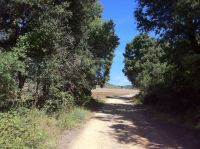
The trail continues along a path that departs northwards from Oteo, next to the parish church of San Mamés. After a few metres, it merges into a more substantial farm track, which you should follow leftwards for a little over 200 m. Then, you should take a turn-off on the right, along a path that quickly enters forestland. This path climbs for some 2.5 km with a 160 m incline, parallel to a small gully and next to the A-2128 highway, which it crosses once. This part runs through an area populated with gall and Holm oaks, included in the area of the Sierras Meridionales de Araba/Álava S.P.A. for Birds. High up, the trail enters the municipality of the Valley of Arana, where you can see in the foreground the town of San Vicente de Arana, the final destination of this short stage.
In the centre of this town, you will discover the church of San Vicente —one of the most renowned works of Basque plateresque style— which features a unique retable with two singular altarpieces; as well as the chapels of the Virgin of Uralde and that of Santa Teodosia, where a multitudinous pilgrimage is held in September. Unique customs are preserved in San Vicente de Arana such as that of the May revolt.
This stage is suitable for cycling, although some parts in the climb up to the Valley of Arana require some skill and the use of low gears, given the path’s unevenness.
Profile
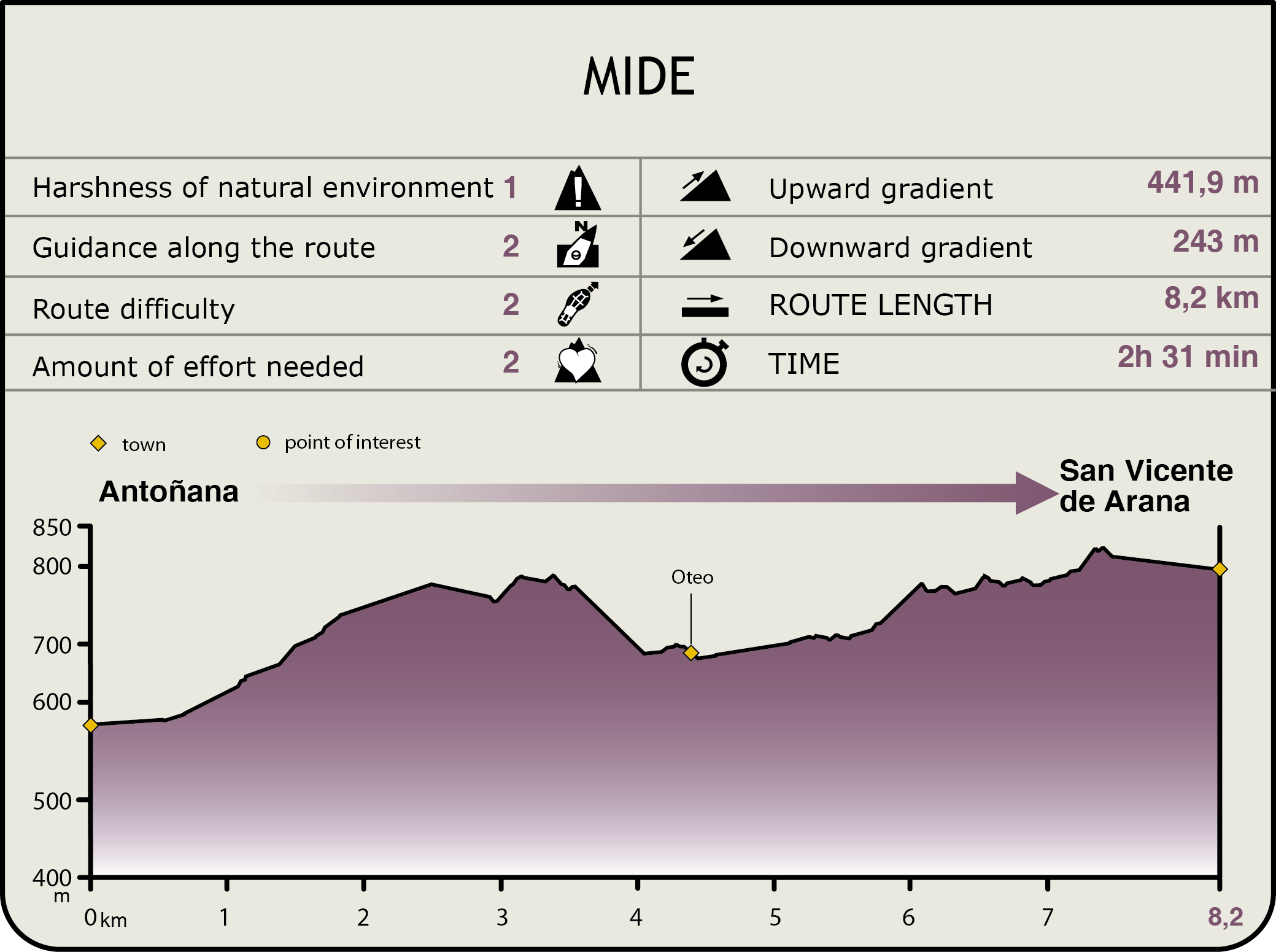
MIDE (Method for the Information of Excursions)
Featured
Further information
Fiestas, Rituals and Celebrations on the Montaña Alavesa
San Vicente de Arana is the site of the staging of an unusual ritual of pagan origin, known as the fiesta of “El Mayo”, which was conceived as a way of asking for good weather conditions. The event consists in searching in the mountains for the tallest, straightest beech tree possible whose bark is stripped and which is taken to the town. Once there, the tree is decorated with different symbols, such as a wax cross, two crossed swords, a weather vane, a white handkerchief and the Maundy Thursday cloth (a square piece of fabric the Eucharist is placed on). The month of May is then blessed (the festivity is staged on the third day of this month) and the wax cross is then kissed and the tree hoisted up. The inhabitants finally dance around it.
The tree will remain in the place where it has been erected until September 14, the fiesta of the exaltation of the cross, when it will be knocked down in the middle of a great celebration.
There are other rituals in the region that are meant to calm storms. One such ritual is that of San Vicente de Arana, during the Corpus Christi procession, when the residents throw little stones as the priest, carrying the Holy Sacrament, passes by. He steps on them and then picks them up and throws them into the sky when a storm approaches. Another “anti-storm” ritual was to light the candles that had been kept alight around the Holy Sacrament during the night of Maundy Thursday to Good Friday.
In Maeztu, a town in the municipality adjoining the Valley of Arana, on similar dates to El Mayo, the Cruz del Pañuelo is celebrated on the first weekend of the month. There is a cross on the outskirts of the town, which is the site of a popular pilgrimage whose only act entails the oldest person from the town placing handkerchiefs on it that have been embroidered with symbols of passion by participating single women.
The Canto a las Auroras is a tradition that is still deeply rooted in many towns in the region, consisting in “auroros” waking up the inhabitants by singing chants on specific dates, such as on patron saint holidays, Christmas Day, New Year’s Day and the Epiphany or on the days of San Isidro and the Virgin of La Inmaculada.
Sierras Meridionales de Álava SPA for Birds
This protected space, covering 16.402 ha, is formed of different mountain ranges and constitutes a first-class biogeographical barrier thanks to its predominantly east-west orientation, curbing the influence of the ocean climate. This circumstance means that Atlantic vegetation (beech groves) grows on the Atlantic side and Mediterranean type (gall and Holm oaks) on the south.
One of the main ornithological values in this area is its potential for the recovery of the Bonelli’s eagle (Hieraaetus fasciatus), an endangered species in the Basque Country and in sharp decline in the whole of Spain. A pair that breed in this area and in another four previously populated territories has been identified.
Another of its values is that this space is one of the areas in Araba/Álava where bearded vultures (Gypaetus barbatus) regularly appear. This area is believed to be of interest on account of a hypothetical movement of this species towards the Cordillera Cantábrica or the Sistema Ibérico, and may even be recolonized in the medium term.
